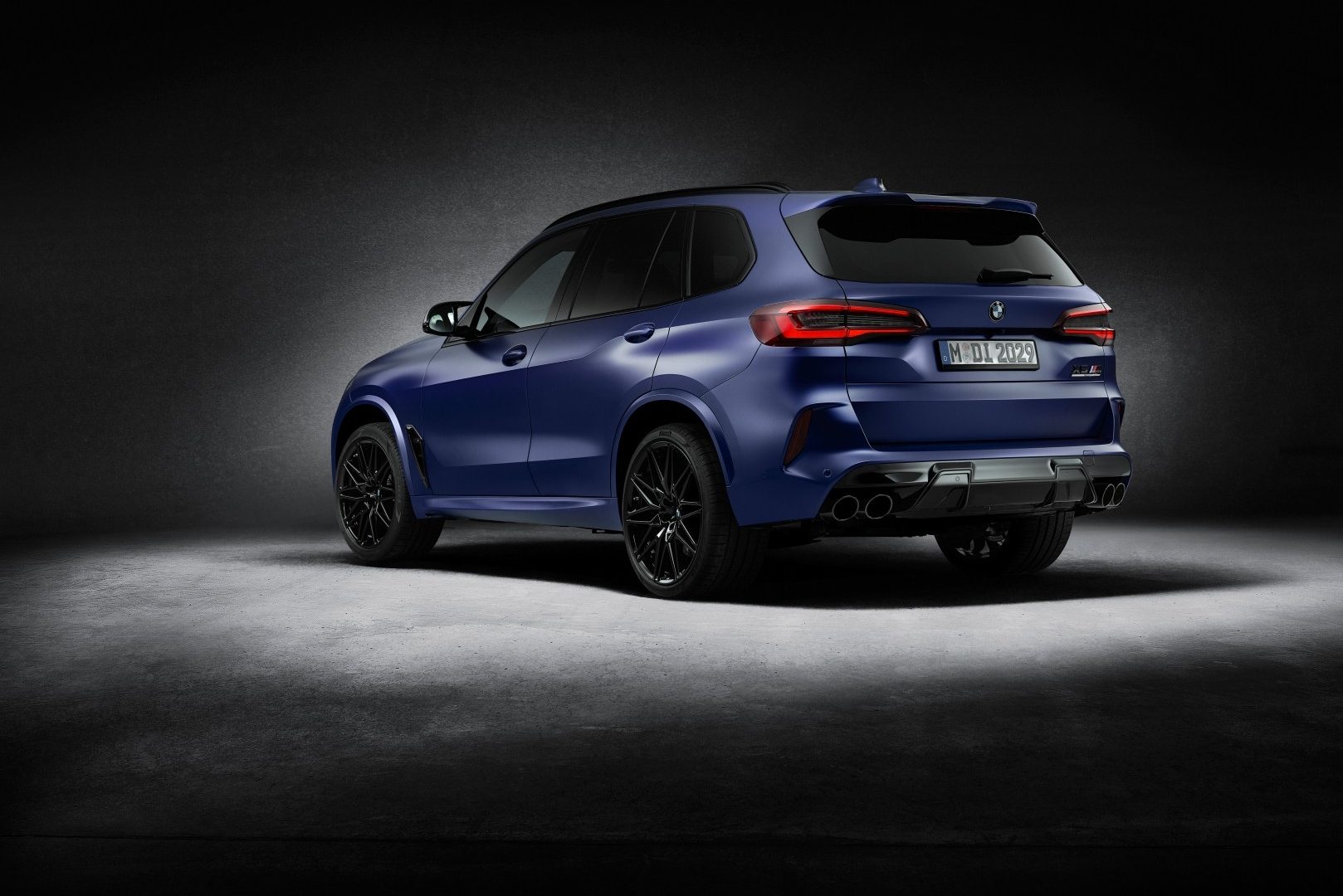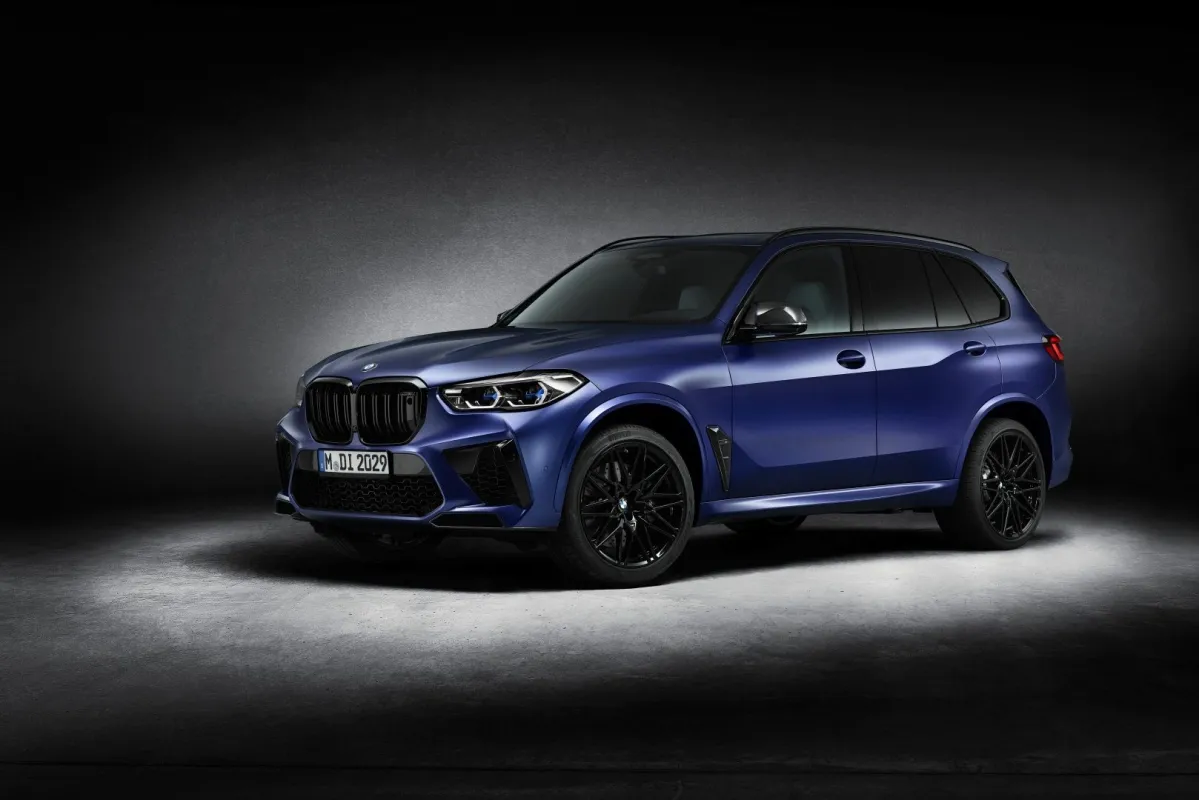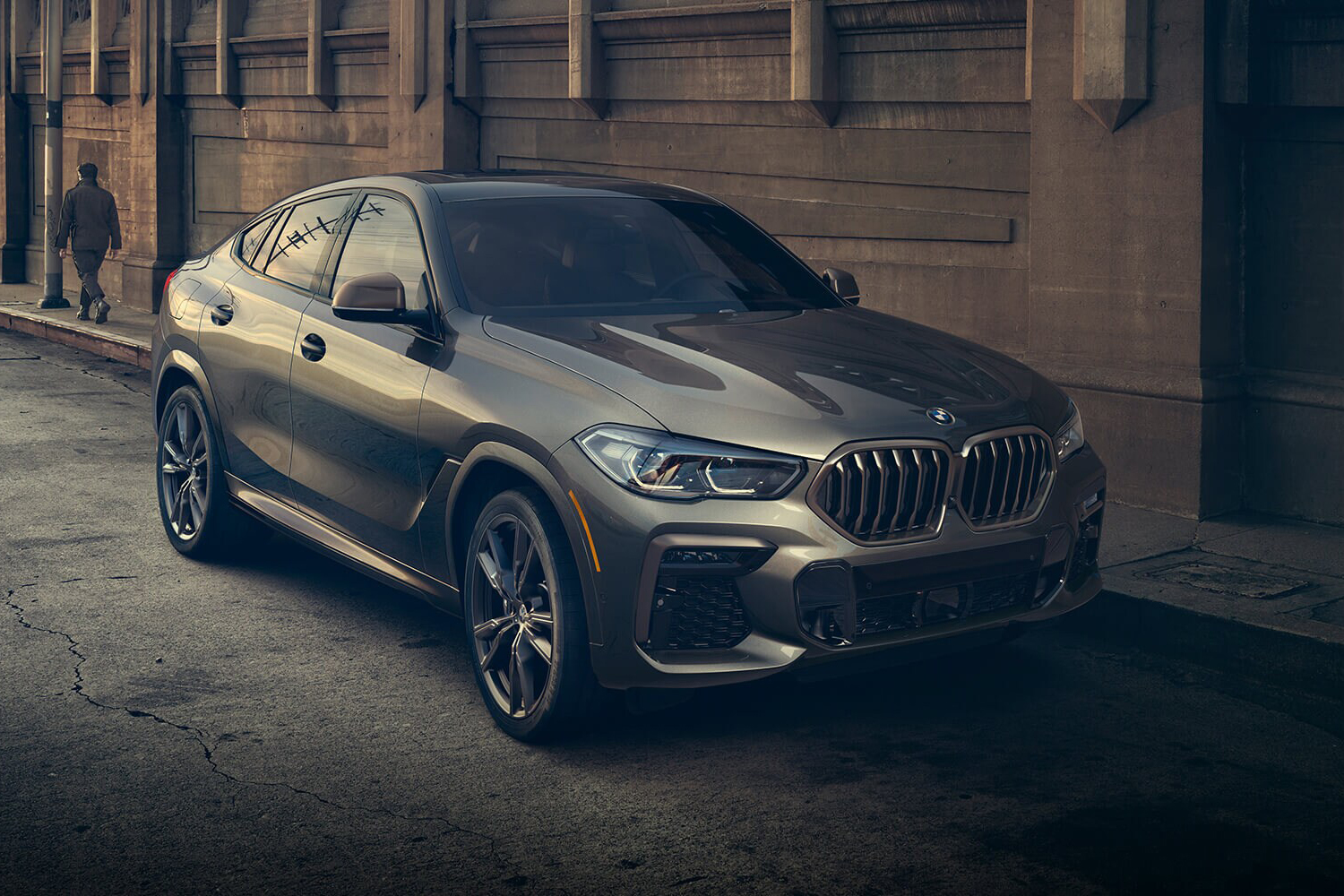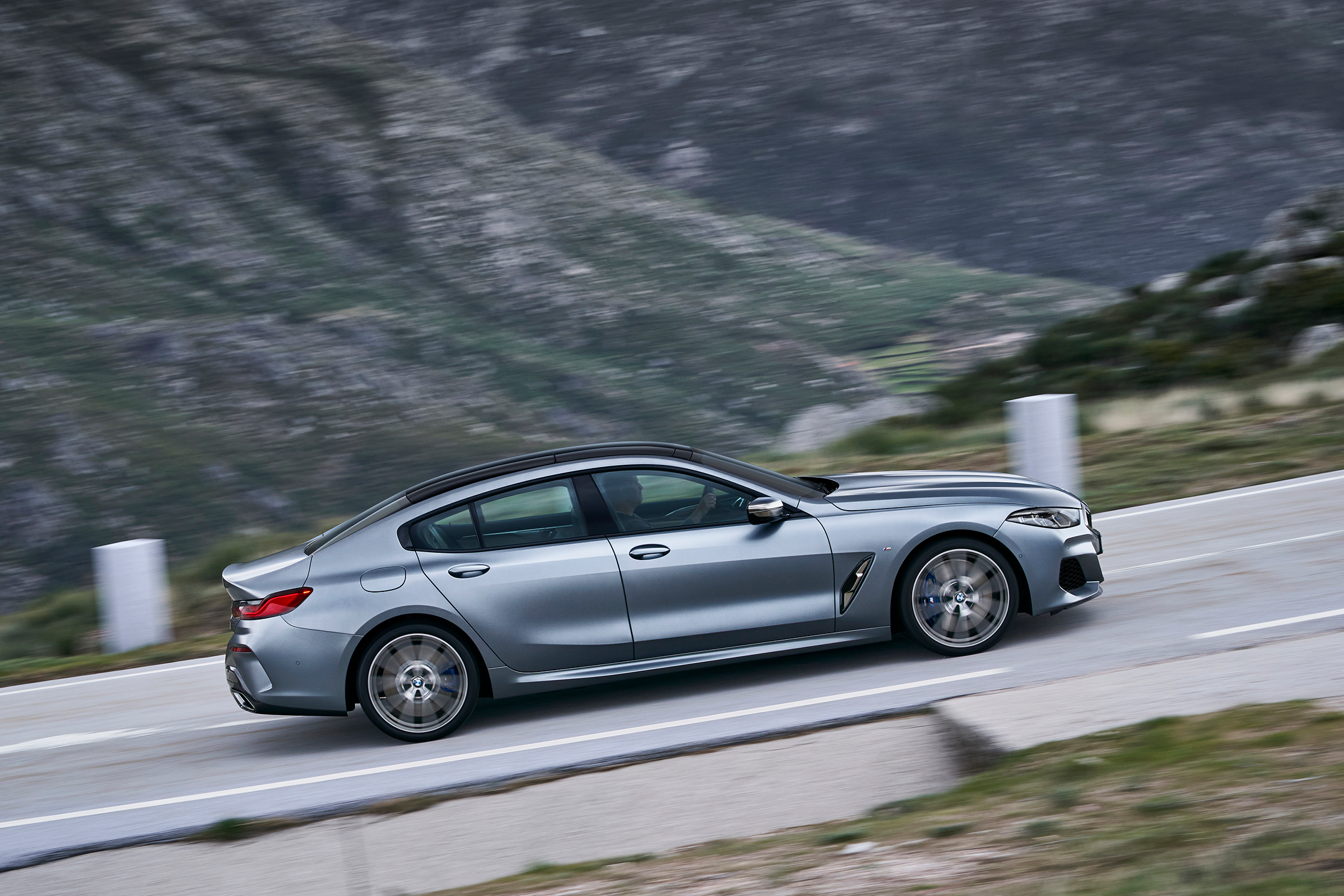The percentage of people who will ever drive an SUV on a race track is vanishingly small. In fact, I’m willing to bet that the vast majority of those who’ve ever worn a helmet in the left seat of a sport-utility vehicle are either automotive journalists (whose willingness to sample the absurd is never in short supply) or the developmental engineers and hot shoe test pilots helping to build these things in the first place.
Despite this incontrovertible fact, “high-performance” SUVs remain a scorching data point in one of the hottest areas of the new vehicle market. The appeal of a two-ton truck with gobs of horsepower isn’t all that difficult to understand, as it taps into the straight-line speed instinct that has run through the muscle-machine matrix since it came to the fore in the 1960s. The idea of making such a beast turn as smoothly as it accelerates, however, would seem to boggle both the mind and the more than casual demands of Newtonian causality.
It’s here that models like the 2020 BMW X5 M Competition prove to be among the most fascinating success stories in recent four-wheeled history. Marketed almost exclusively for a purpose that will 99.9 times out of 100 remain unfulfilled, they stream out of showrooms and generously fill corporate coffers as legions of buyers flock to the upsize M, a badge that was once reserved exclusively for race-derived sedans and coupes but now has a much more remunerative mission statement.
Coded for Speed
It’s popular in some quarters to view the affixation of M to anything other than a race-derived homologation special as something of an affront to BMW’s heritage. I don’t share that viewpoint, and clearly neither does anyone in Bavaria, which is all too content to spin off its history and print money from its SUV assembly lines in Spartanburg, South Carolina, where the X5 and its siblings are assembled.
What’s far more interesting is the way in which technology has democratized automotive performance to the point where it’s now become a commodity to be portioned out across an entire vehicle lineup. Engineering has advanced to the point where any sufficiently motivated automaker can produce a respectably quick vehicle regardless of the segment it finds itself in. Enormous, sticky tires, fantastic electronic stability-control programs and braking systems able to withstand the heat of a Space Shuttle reentry have largely banished the idea that curb weight and ride height are the primary determinants of turning in scorching lap times.
It certainly helps that with the BMW X5 M Competition the German braintrust started with a truly excellent platform. In day-to-day duties the X5 is a standout, rolling comfortably from grocery duty to after-school taxi to weekend road-tripper with its respectable interior room, well-portioned cargo area and the kinds of luxuries high end shoppers both need (heated and cooled seats, head-up display, fantastic iDrive infotainment system) and don’t (gesture controls).
There’s really no reason all of the above couldn’t be paired with kidney-punch power and a fantastically competent suspension tune. These two things that are in no short supply at BMW, which has traditionally stockpiled potent engines and crafty chassis cheat codes.
Here Comes the Boom
And so is born the 2020 BMW X5 M Competition, a truck that is seriously set on redefining your personal definition of excess. With 617 horsepower and 553 lb-ft of torque offered up by its 4.4-liter twin-turbo V8 (an extra 17 ponies over the “standard” X5 M), the Competition can hit 60 mph from a standing start in a mere 3.7 seconds, which is enough to shame a long list of would-be sports-car challengers. Its eight-speed automatic transmission also offers several unnecessary levels of driver-controlled shift speed and firmness, along with an even more perfunctory manual mode accessed by paddles behind the steering wheel.
The X5 M’s all-wheel drive system provides for sure-footed grip in snow, sleet and corner exit, all while a litany of digital hand-holders keep a close watch on the wheel (and wheel-spin) to prevent heroic outbursts of acceleration from ending in tearful calls to the insurance company. It’s a frighteningly quick vehicle that is just as astounding when asked to change direction, which it does without complaint or drama.

Welcome to the Bubble
That the BMW X5 M Competition is so relentlessly stuck to whatever surface it’s driving over is a testament to its software tuning and the thick swaybars, strut tower brace, 21-inch Michelin Pilot Sport 4S tires and adaptive dampers, and should come as no surprise to anyone who’s familiar with the current state of the SUV art.
Having built up so much of the Competition’s credentials, why am I so convinced that it won’t ever be used to, um, compete anywhere other than in a game of office-parking-lot oneupmanship? The answer is simple: because it’s absolutely no fun to hurtle the BMX X5 M from one apex to the next.
While there are indeed visceral thrills to be had in punching the go-pedal and holding on for as broad a sweep of the speedo as one can stomach (with the truck topping out at 177 mph when equipped with the optional M Driver’s package), that excitement is absent should you connect a set of corners on a twisty back road. The X5 M simply responds to each steering input with the rigid obedience of a high-performance automaton, servos and software whirring in the background to ensure thoroughly disconnected yet utterly precise performance.
You see, that’s the thing about the “democratization” I mentioned earlier. The best way to pass the performance around is to completely insulate the driver from the actual act itself. Dialing out all of that weight and tippy center of gravity has the common side effect of deleting any real feedback from the road or vehicle, placing pilots within a carefully delineated envelope of experience that risks no connection between human and machine lest it upset the end result. For all its sport exhaust sound and fury, the X5 M Competition is no different, keeping occupants safely numb at triple digit speeds that impress in the abstract rather than in the moment.
Choices, Choices
Herein lies the conundrum of the M SUV. If you’re a serious weekend racer, you ostensibly care more than a little about the experience behind the wheel, and already have an equally serious track car sitting in your garage. If you’re not all that keen on early mornings, plastic trophies and tagging the occasional pylon, you’ll most likely be far too intimidated by the idea of chucking around a multi-ton monster to risk an attempt, even with an instructor in the seat beside you.
The 2020 BMW X5 M Competition is in all respects a top-notch luxury sport-utility vehicle, albeit one that comes with an eye-watering price (roughly $114,000) and horrendous fuel mileage (15-mpg combined). The thing is, all versions of the X5 are equally laudatory in their handling of regular driving tasks, with the twin-turbo V8 of the X50i model trading a mere 0.2 seconds of sloth in a drag race against the M for a savings of nearly $32,000 on its window sticker.
With all of this in mind, it becomes difficult to recommend the X5 M Competition from any rational standpoint. You won’t ever explore the limits of what its hard-working designers have baked in to its uber-athletic chassis, and on the off-chance that you defy expectations and show up in pit lane one Saturday morning, you’ll be hard-pressed to enjoy the experience. The question then becomes: Do you want to have the fastest, most expensive tow rig at the track, or would you rather spend that extra $32k on something that’s actually fun to roll off the trailer instead?
This article was featured in the InsideHook newsletter. Sign up now.






















